
Cook and Pan is not only a supplier of steel pans, we are also a great source of information about them. From fantastic recipes, to seasoning and using the pan and debunking myths about the steel pan. However, there is another type of pan that has similarities with Dutch oven and that is not yet so well known to many, namely Carbon steel pans, colloquially also called carbon steel and known in English as Carbonsteel.
Our experts really love carbon steel pans, but because they are actually more common in restaurant kitchens than at home, we haven't written much about them yet, which is a shame. And we're going to change that quickly!
What is the difference between carbon steel and Dutch oven? Honestly, not that much. Of course, there are a number of differences, but these are relatively technical, the bottom line is that carbon steel and Dutch oven are remarkably similar. They both retain heat well, so once they are hot, they stay hot. This makes them ideal for tasks such as searing steaks or crisping chicken or fish. Just like with Dutch oven, the carbon steel pan needs to be seasoned. This is nothing more than repeatedly heating the pan with a thin layer of oil until a natural non-stick coating is created. You can also order the Dutch ovens pre-seasoned, so you don't have to season them anymore, this is the case with the Jazz carbon steel pans, for example. They can also both go straight from the stove into the oven, carbon steel and Dutch oven are both sturdy materials that will last longer than a lifetime.
They also share the same disadvantages. On gas stoves, they both conduct a little less, this is because with gas the pans are only heated in the middle, with induction this is over the entire bottom of the pan. Also, both pans are not suitable for prolonged cooking of acidic or alkaline (substances that are basic, the opposite of acidic). So you don't want to let a complete bottle of wine cook in it for a long time (splashes are of course fine) or make a tomato sauce in it for a longer time.

A perfectly seared lamb rack in a carbon steel frying pan.
So, why do we bother to talk about Carbon steel in detail if it is essentially the same as Dutch oven? There are a number of things that make the difference, making it more than worth considering switching to or choosing Carbon steel.
First, if you love the vintage Dutch oven with its thinner construction and smooth surface, then the carbon steel pan will definitely appeal to you! Carbon steel is pressed and spun from sheets of metal and not cast as with Dutch oven. This makes the baking surface extremely smooth, better than with a Dutch oven. This also means that a well pre-seasoned carbon steel pan will perform significantly better than a well pre-seasoned Dutch oven
Secondly, the shape/size consideration. Carbon steel and Dutch oven are similar in terms of the metal itself, but their shape differs enough to be a very important factor: most Dutch oven casserole pans have vertical sides (almost perpendicular) making them suitable for tasks such as baking chicken, or cornbread and pan pizza.
Most carbon steel pans, on the other hand, have sloping sides, making them much better suited for sautéing as well. You can also better 'throw' and flip your ingredients, which is very nice. If you want to send something into the air, you have to send it up a slope and not let it hit a wall (as with Dutch oven). Carbonsteel pans therefore have the perfect shape for this.

But there are several differences that could make you choose carbon steel pans. Dutch oven pans are thicker and heavier than carbon steel with exactly the same diameter, but Dutch oven heats up a bit better because of this. Carbon steel is better at baking and sautéing dishes, where Dutch oven is a bit better at roasting meat. Carbonsteel pans are a lot lighter in weight and are therefore easier to lift and move around with one hand.
Anne from Cook and Pan 'I happen to have two 30 cm frying pans at home, one Dutch oven and the other carbonsteel. The Dutch oven pan weighs 3.3 kg while the carbonsteel pan weighs only 2.5 kg'
Carbon steel is therefore lighter than Dutch oven, but this does not alter the fact that both are a lot heavier than aluminum pans. They are certainly not as light as that.

The difference between the straight sides of the Dutch oven pan and the sloping sides of the carbon steel pan.
Like Dutch oven, carbon steel is also quite cheap. Prices can vary quite a bit online. However, we recommend avoiding the cheapest ones, unless you can personally check whether they are not made of very thin metal. In comparison, good carbon steel pans are often thinner than Dutch oven, but not much thinner. Even if you are on the expensive side, chances are that you will not exceed 100 euros (also with larger sizes). You will often spend a lot less, such as with our trusted and beloved Jazz carbon steel pans.
Conclusion: Carbon steel pans are not necessary in your kitchen, but they are a very nice addition that you will enjoy for a long time. If you already have a lot of Dutch oven pans in your kitchen, it is not necessarily necessary to purchase carbon steel pans. But, if you are still building your collection, or like to buy cooking pots impulsively (whether you need them or not) then it is definitely worth purchasing a number of carbon steel pans.
Do you have any further questions about this interesting topic? Or do you need help buying the right pan? Please contact info@cookandpan.nl
💡 Please note: We love to cook with courage, but safety always comes first. You can read more about this on our disclaimer page.






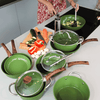
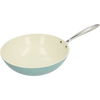
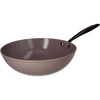
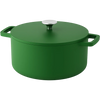
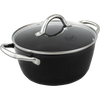

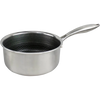
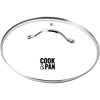
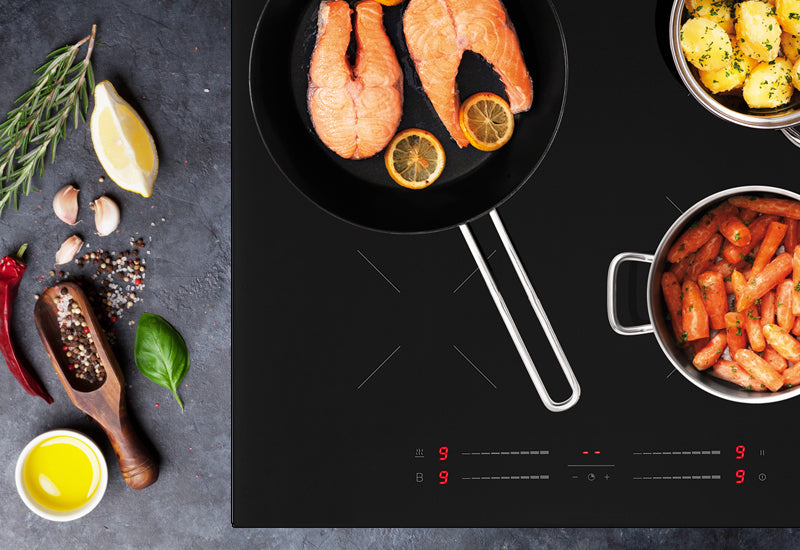


Leave a comment
This site is protected by hCaptcha and the hCaptcha Privacy Policy and Terms of Service apply.